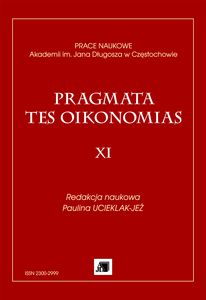Assessment of Inequality of Unsatisfied Health Needs Depending on Education
Keywords:
health inequality, social determinant of health – education, assessment of health needs, availability of health care, concentration of the state of health, the Herfindahl- Hirschman rate, Theil indicatorAbstract
The objective of the paper is assessment of health needs depending on the level of education, which provides about health inequality in the countries of the so called new European Union. The relation between social determinant of health, i.e. education and subjective assessment of availability of health care. This article is a continuation of earlier works, an extension of analyses referring to the concept of sensitivity of the health care system and may be a source of important information affecting the determination of a social policy and the strategy of strategies affecting inequalities based on an assessment of health needs.
The following research hypotheses were set at the stage of planning the research:
H1: the stratification between social groups of different level of education in access to health needs in the countries of the so called European Union;
H2: unmet health needs resulting from lack of access to affects the state of health.
The conducted estimates reveal that the assessment of availability for all social groups when divided into levels of education in the analysed period 2007–2015 did not improve. In addition, the level of concentration of the unmet health needs in all the studied countries of the so called new EU did not improve either. The second hypothesis was accepted in the course of verification. Methods of concentration were used in order to verify the hypotheses and it is difficult to question the legitimacy of application of the said methods, though in case of the concentration it is necessary to extend interpretation of the specific nature of indicators. Inequalities in health, proposed by the authoress, were used in the study, as well as the Theil and Herfindahl-Hirschman indexes for estimating health need level inequalities in time.

